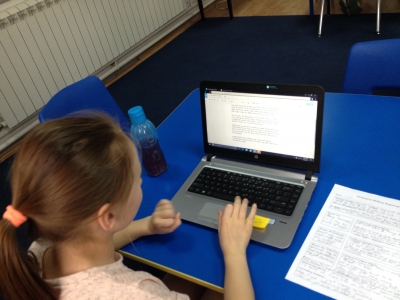First, I begin with teaching goals in mind. What do I want my students to know or be able to do? Will technology impede or enhance the goal? Not every task can or should have a technological component. Secondly, as I am designing a learning experience, I use the SAMR model of technology (Substitution, Augmentation, Modification, and Redefinition) to consider how technology can enhance or even redefine the task.
In fourth grade we use Google Classroom for both communication and assignments. We use it as a simple substitution tool, communicating with students, sharing announcements, websites and videos to support their inquiry. We also use Google Classroom to create and manage assignments. Currently students are writing reflections on their learning journeys. The wonderful thing about Google Classroom is that the teacher can choose to allow the students to comment on each other’s posts. This feature can drive the discussions and reflections deeper (modification).
We use some of the other Google products for a variety of learning experiences. We often use Google Docs in literacy class. Students write their first drafts on Google Docs. During the revision stage, students use the Comment and Suggesting tabs to help revise with their friends. Finally, when they share it with me, I can use the revision history to examine the thinking and revising process (augmentation).
Finally, many of our summative assessments use technology to bring student learning to a wider audience. For our Sharing the Planet unit, students will be creating an e-book for grades one and two using Book Creator. They will be able to take the information they have collected to create a book that includes text, photos, videos, drawings, and music. (redefinition).
In short, technology can be a great asset to our students’ learning, but only if we as teachers are clear in our purpose and objectives. Both Google Educator Training and Google Educator Groups (GEG) are great places to start. With a little bit of thought, planning, and support, technology can help students inquire and share their knowledge in a more profound manner.
By Julia Denney, Grade 4 Teacher
The International School of Belgrade

